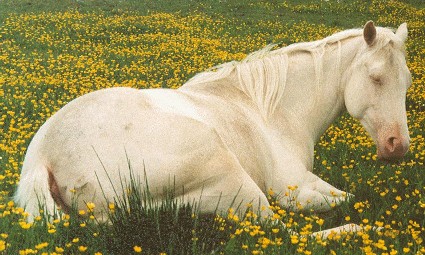cream horses
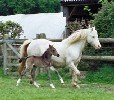
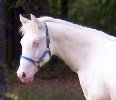
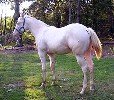
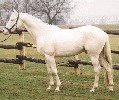
The term cream horses may be used specifically to refer to cremello horses or more generally to refer to the so called “double dilute” horses. These last - which include the cremello - are horses that are homozygous for the CCr allele at the C locus (the cream dilution gene). CCr is semi-dominant and dilutes red to yellow in a single dose and to pale cream in a double dose. Horses homozygous for the CCr allele are either cremello (for a horses with a chestnut base color) or perlinos (for a horses with a brown or bay base color). Cream dilution can have a very subtle effect on black pigment and horses with a black base color are diluted to smoky black (when heterozygous for CCr) and smoky cream (also called smoky perlino). The CCr allele does not occur in some breeds, such as Arabs, Haflingers and many of the draught horses. In these breeds there are therefore no cream horses, and also no palomino, buckskin or smoky black horses either.
Smoky black horses may be very difficult to identify and may look bay, liver chestnut or faded black. Smoky creams may have a mane, tail and points that are coffee, yellowish, smokey blue or sooty. The whole coat may be pale cream, but smoky creams often have a darker and very attractive, coffee colored, cast to the coat.
Cream horses can be used to produce palominos, buckskins and smoky blacks (also known as black buckskins). Palomino foals might be produced by mating any base colored horse (black, chestnut, bay or brown) to any double dilute horse, depending on their genotypes at the extension locus. Palomino will definitely be the color of any foal with one cremello and one chestnut parent.
Cream horses have traditionally been shunned by some breeders and breed authorities, but are now gaining increased acceptance, thanks in part to the efforts of the Cremello & Perlino Educational Association (CPEA). Their research and campaigning helped to finally get the American Quarter Horse Association’s rule against the registration of cremello horses withdrawn in 2003 (rule 227(i), formerly 227J). Under this rule cremello, perlino and smokey cream foals couldn’t be registered as pure-bred American Quarter horses even if the sire and dam were AQHA registered pure-bred champions with other AQHA registered foals. In the UK The Cremello Society - set up to promote the recognition and appreciation of cream horses - was officially registered in 2004. The Society provides a registry for all dilute colors, including cremello, perlino and smoky cream, as well as palominos, buckskins and smoky blacks.
For those interested in cream horses perhaps you would like to visit the cremello horses page.
|
|






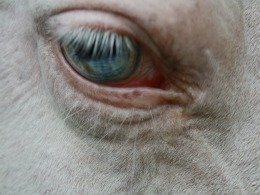 Cream coloured horses have cream coats with pink skin and blue or glass eyes (cremello is pronounced with emphasis on the penultimate syllable). The cream colour can vary from a very pale off white to a richer colour resembling a pale gold (like a pale palomino). If they are not white (due to socks or other white markings) the lower legs may be a darker shade than the body. The manes and tails are white or ivory for cremellos and may be darker for perlinos, often described as coffee colored, or as having a yellow or tan cast. In reality it can be difficult to tell whether a cream horse is a cremello or perlino.
Cream coloured horses have cream coats with pink skin and blue or glass eyes (cremello is pronounced with emphasis on the penultimate syllable). The cream colour can vary from a very pale off white to a richer colour resembling a pale gold (like a pale palomino). If they are not white (due to socks or other white markings) the lower legs may be a darker shade than the body. The manes and tails are white or ivory for cremellos and may be darker for perlinos, often described as coffee colored, or as having a yellow or tan cast. In reality it can be difficult to tell whether a cream horse is a cremello or perlino. 